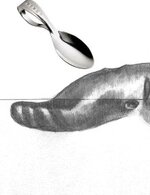- Joined
- Jul 11, 2005
- Messages
- 378
tonmo;92125 said:In all seriousness, if this is indeed a ceph, could it be mimicking behavior? Looks like a sea-slug, looks like a bottle-nose (and that's who it was swimming with, right?)... Could that be possible? We know that the "mimic" and wunderpus themselves have some pretty incredible mimicking capabilities. Might other species of ceph have this ability?
Just asking!
I was only joking when I asked if it was mimicking a dolphin, but I guess octos can mimic sea snakes, flatfish, indeed all manner of non-ceph like creatures, is this the first recorded mammal-mimic?






